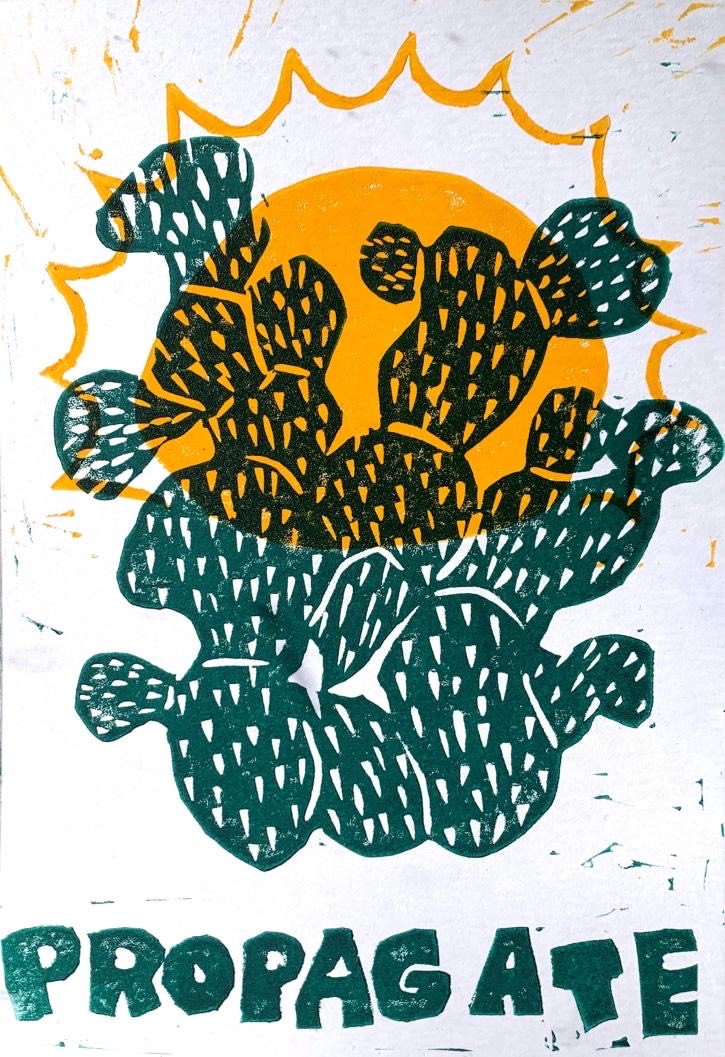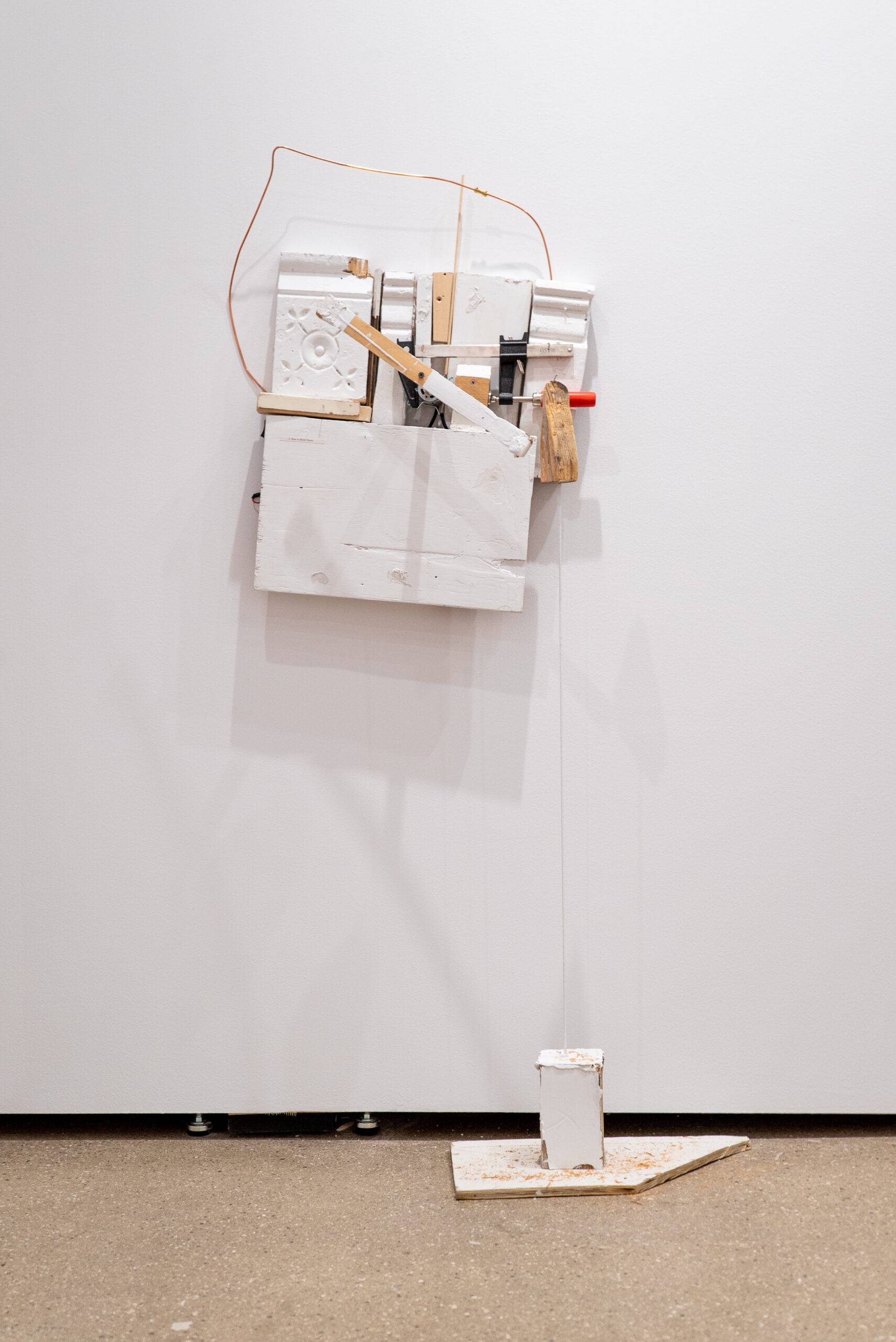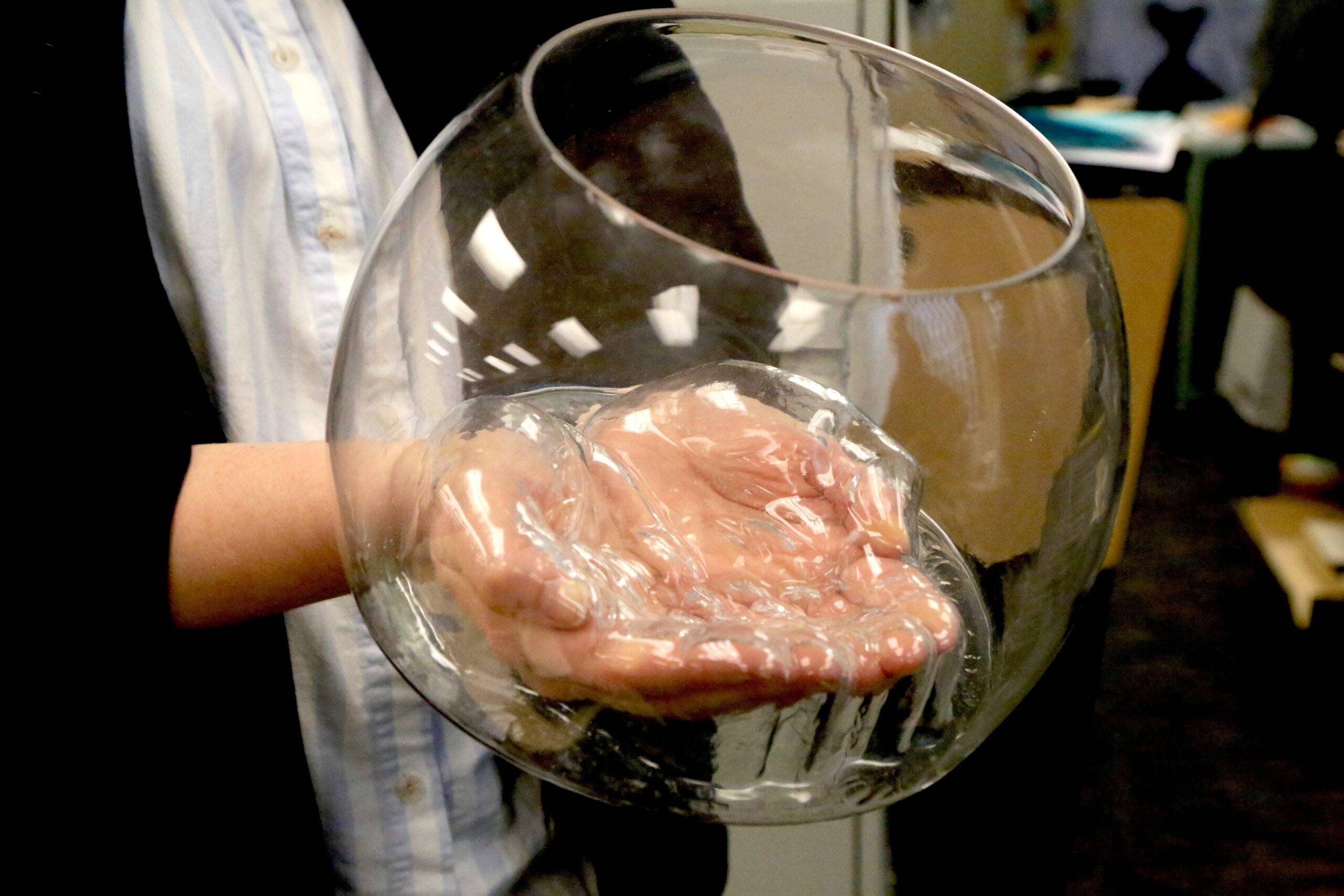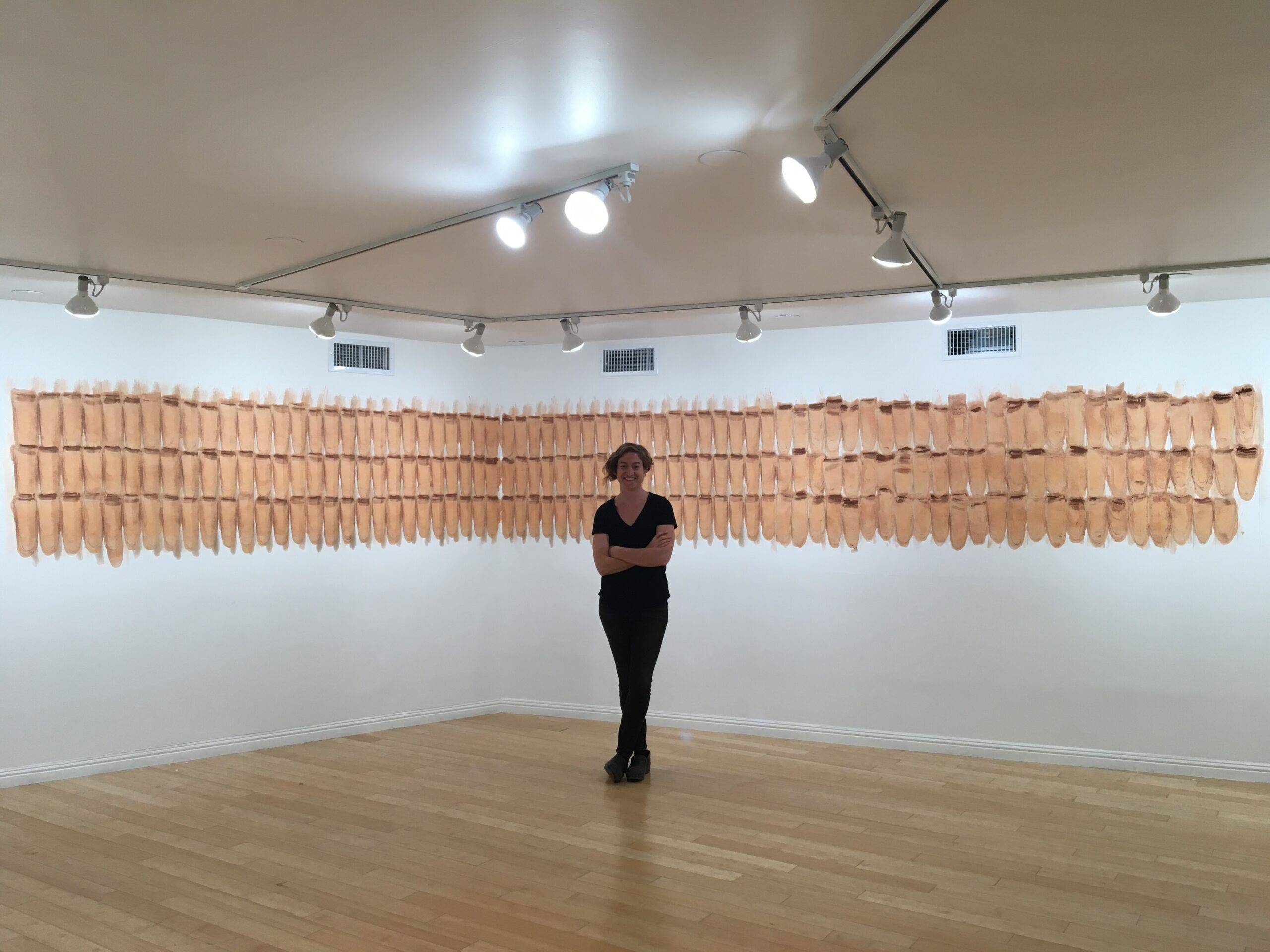Founder of Navaja Press and self-proclaimed “Printmedia’s Sweetheart,” Meli Nava is a recent graduate of the School of the Art Institute of Chicago (SAIC) whose mission is to tell the stories of the Southwest. She established Navaja Press in April of 2020 in order to continue the legacy of rancheros, of the Mexican printmaking traditions, and of transnational storytelling. Navaja Press is based in Meli’s hometown of Phoenix, Arizona.
Like many others in March of 2020, Meli returned to her parents’ home and finished out her BFA online from her childhood bedroom. Having already established the goal of starting her own press in her final year of college, Meli went ahead with creating Navaja Press before her graduation. Taking full advantage of extra space and consistent warm weather that Chicago lacks, Meli made her vision a reality. Half of her bedroom is now dedicated to the press. I had the opportunity to sit down and interview the founder of Navaja Press and gain further insight on her influences, operations, and plans for the future.
I’m in the privileged position of knowing Meli personally from our time together at SAIC, and I also worked alongside her through a collaboration between Navaja and Mobile Print Power. I asked Meli to “speak to me in the way you think Navaja Press’s voice should sound.” It is clear from the way that Meli talks about her work that she cares deeply about it. Her history is important to her, and that lineage becomes much of the content that Navaja Press produces. She speaks with intention, the warmth beaming from her words bringing levity to some of the seriousness of the topics discussed.
In her own words, Meli Nava is “a first generation Mexican-American, native to Phoenix, Arizona, primarily a printmaker specializing in stone lithography, copper etching and wood relief, with a strong affinity for book arts and bookmaking, which is what brought me to making this press, which is all-inclusive.We’re not limited to just making zines and artist’s books — we’re really interested in putting forth print editions, screenprinting, wood relief. One day lithography will be in there.” The press already has two collaborations under its belt, one with Phoenix based artist Héctor Viramontes and another with New York-based printmaking collective Mobile Print Power. Reaching out and forming community with networks of other artists and storytellers is important to Meli’s personal practice and her work through Navaja Press.
Both of Meli’s parents were born in Mexico and immigrated to the United States before she was born. Her mother spent her early life and young adulthood in Chihuahua, Mexico and her father grew up on both sides of the border. It is from this dual national heritage that much of Navaja Press’s work springs from. Both of Meli’s collaborators in this endeavor, Taylor Ramirez and Lorena Reyes, share this first-generation Mexican-American background as well. Although the press strives to include all narratives in its publishing and editioning, centering the voices of brown women is paramount to its mission statement.
Some of the first questions that I asked Meli were how does she define her community — and when does her storytelling stop being her own and become a retelling of another’s? Her responses to the questions were insightful: “I’m so attached to the specificity that comes with my identity, mainly because the archiving and writing of Mexican American, or Chicanx history, whatever you want to call it, is very curated to very certain archetypes, very certain attributes… and that just goes with the very convoluted writing of history or how Brown and Black bodies are depicted by history. That’s why I love to be as specific as I can with my identity. Again, no shade to the Chicanx movement in L.A. … I have so much respect for the visibility and culture they gave. But at the end of the day, that’s not my history, that’s not my family’s story. I really just feel at home with saying I am a Mexican American woman from Phoenix, Arizona.”
Specificity is important to the press, as it key to defining of oneself and holding others’ narratives with respect. Meli affirms: “Being so specific with my identity is an act of countering that so convoluted writing of history.” The communities that Navaja Press engages with are very broad, but it firmly stems from a Southwestern, Latinx, immigrant core. Translating oral histories and engaging with family members are ways that Navaja Press platforms stories that have not always gotten a chance to be told.
Meli’s own family history can be traced through a legacy of rancheros, ranchers or cowboys. She pays homage to her heritage through the Navaja Press logo, which features a lasso framed around the name of the press. Labor is not only important to her family history, but the lineage of printmaking itself. Print is one of the most democratic mediums: a screen print made by a child will look the same as one pulled by the master printer if using the same stencil. The medium has been integral in disseminating critical social messages as well as spreading joyous images.
The linocut print that Navaja Press produced in collaboration with Mobile Print Power is an example of how that joy intertwines itself with heritage. The two-layer linocut postcard features a prickly pear cactus framed by a blazing Southwestern sun. The word “propagate” is written below the image in blocky text, an instruction that connects us to the geography being implied. Cacti are a consistent theme throughout Meli and Navaja Press’ work. There are nearly 150 different variations of the plant, a fact of which Meli eagerly informs me. The features that characterize the land in which she and her family were raised are replicated onto the postcard, that will make its way across the country. A portion of the funds raised from the sale of these postcards will be donated to mutual aid networks in Phoenix and New York City.
The potential of art as a tool is very present in Navaja Press’ work. The Taller de Grafica Popular (TGP) has been a core inspiration for Navaja Press from the beginning. This Mexican print collective was founded in 1937 by Leopoldo Méndez, Luis Arenal, Raúl Anguiano, and Pablo O’Higgins, and produced imagery that aimed to reflect the lives of working class Mexicans while also creating a space for people to experience joy through art. Of course, Meli is not without her critiques of the movements that came before her. “I’m not going to lie, there were some problematics in there, mainly white Mexican men dominating it.” But, she says, “I will never tire of being inspired by the TGP.” Recognizing the history she draws from while also defining where Navaja Press is situated in it is part of the balancing act Meli takes on in her practice.
Grounding her work in a rich history while continuing to develop new connections with contemporary narratives is one of the driving forces of Navaja Press. For Meli, “Engaging with the community that we’re pulling from” will always be central to her work and the work of her press.


























Bravo Meli!!! Great to see you hard at work and drawing attention to an under-appreciated region.